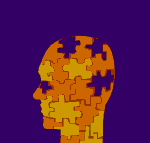 Brain Health and Balance
Brain Health and Balance 
“How little can I exercise and still preserve brain health?”, you may ask.
“Such exercise lowers your odds of getting the disease [Alzheimer’s] by more than 60 percent.” – –John Medina, author of Brain Rules
“Leisure exercise” can cut the risk of dementia by a whopping 50%.
I know what you’re thinking “leisure” and “exercise” don’t go together. More on this in a minute.
In a previous post on Physical exercise for the brain, we talked about the MANY benefits of physical exercise for your brain. Today, we discuss the minimum that you can do and still benefit significantly.
Part 2: Minimum: Minimum Physical Exercise for My Brain? – What type and how much?
Next time, in Part 3, we will have answers for those of you who want extra credit. Part 3: Best Brain Exercise: Enriched/Challenging environment exercise. (Minimal vs getting the most benefit)
I will start out by with how truly powerful leisure activity can be. Regular, leisure exercise 2x per week can cut your risk for all forms of dementia by 50% and your risk of Alzheimer’s by 60%(1). If you walk 20 minutes every day, you reduce your risk of stroke by 70%(2) . That’s amazing!
What is “Leisure activity?” When these studies say “leisure activity,” they mean activity that is not work -related.
Does the exercise at your work count? I know many people who say, “I can’t exercise after a long day of what I do.” It’s the same, isn’t it. Exercise is exercise, right?
No. Actually, it’s not. Well, at least that’s what the research shows, on the surface. Of course, that doesn’t make common sense; so, I’ll make sense of it for you in a moment.
Several studies have shown that “manual-labour occupations and low education are both risk factors for dementia” (3)
But there is also a STRONG correlation between manual labor workers and lower education and between higher education and more leisure exercise. So, which is it?
Another study clarified this by showing that complex brain work, even among low educated people resulted in lower dementia. “The highest degrees of complexity of work with data that involves analyzing, coordinating, and synthesizing data were associated with lower dementia risk even among lower educated subjects.”
But then, after all that complex work, perhaps they weren’t really “lower educated” anymore.
Here’s the straight scoop. This is what we know on Physical Exercise:
- Physical exercise on your free time helps your brain, a lot.
- Physical Exercise at work is not enough to help, apart from cognitive (thinking) exercise.
Information from a single study that is well done, is really helpful, but we have learned that sometimes they made mistakes and come to wrong conclusions. On the other hand, “Review” studies compile information from several or numerous other studies and evaluate each one for reliability.
Here is some information from one of those good review studies out this year (2014), a thorough review of 27 studies about the effects of physical exercise on the brain(2).
Running around (aerobic) seems to be better than stationary resistance exercise (isometric).
Although both aerobic and isometric physical activity seem to improved brain function (cognition), studies suggest that aerobic exercise may be more effective in slowing degenerative neurological processes that lead to age-related cognitive decline and dementia.38 Researchers think this may be due to the ability of aerobic exercise to improve blood flow, which is well established.41 Other ways exercise helps protect and preserve the brain include the role of neurotransmitters and effects of nerve growth factors.42,43
A key nerve growth factor is BDNF. It plays an important role in preservation and enhancement of cognitive function in humans (Erickson et al,45 ). That research showed that aerobic exercise increased BDNF, hippocampal and temporal lobe volumes, and spatial memory.
But if you like lifting weights for your brain, you are not totally out of luck.
You see, isometric is pushing against something without actually moving it (“iso” = same and “metric” = distance). I can’t think of exercise that is much more boring than that. But weight lifting, well that can be a little stimulating. What does the research say?
Does Yoga, Pilates, Weight lifting, or similar things help?
Well in one study, the compared weight lifting to balance exercises, core toning, and stretching(4). (study of women)
Although balance exercises, core toning, and stretching are great, they are not sufficient to accomplish what we are looking for in the brain.
Here are the details of the weight lifting. because not all lifting is equal. Exercises included: biceps curls, triceps extension, seated rowing, latissimus dorsi pull-down exercises, leg presses, hamstring curls, calf raises, mini-squats, mini-lunges, and lunge walks. They did 2 sets using the 7-RM method. The 7-RM method is taken from the Army fitness handbook. RM stands for repetition maximum. There is a whole book and a couple videos describing this method. I recommend it. I will return to discuss these exercises more when we discuss Sports, Weight loss, back pain, and Wellness/Aging.
Here’s a video by Dr. Mercola fully describing the theory and how to do the exercise, generally.
Here’s an example of doing a push-up with this slow technique by Fred Hahn, originator of a Slow Burn program. I believe they are still available on video to purchase.
But the effects of resistance training (aka weight lifting), at least in women, on executive cognitive functions appear to be selective.
Weight lifting improved ability to pay attention and conflict resolution in older women, but cognitive abilities associated with manipulating verbal information in working memory and shifting between task sets or instructions were not improved.
That particular study was just done on women. It may be different for men and women: Cassilhas et al7 demonstrated that 6 months of 3 time per week, moderate- or high-intensity resistance training improved cognitive performance of memory and verbal concept formation in senior men.
Here’s the takeaway for resistance training (aka weight lifting), Balance and Core training:
- Resistance training (aka weight lifting) is good for your brain
- Balance exercises, core toning, and stretching are are not sufficient to improve [cognitive] brain health… but they are great and important for other things
So, how long do you have to train to get the benefits?
Is 6 minutes too long for you? Yes, you can get SIGNIFICANT brain benefits with only 6 minutes of exercise!(9)
The researchers exercised a group of normal brain-functioning and mildly impaired brain-functioning adults.
The results: 200% improvement in memory/recall ability! That’s dramatic!
Here are the details:
They exercised for 6 min at 70% or their maximum intensity on a stationary bicycle. The control group just rested.
The researchers said the “Exercise effects were striking for both aMCI [early dementia] and cognitively-intact aged control groups.
Compared to the no-exercise group, the mildly impaired brain-functioning adults improved 200%.
The non-impaired exercised adults improved 120%.
The improvement is what is called “retrograde enhancing consolidation.” That means when they see something then exercise hard, then try to remember what they saw, they remember MUCH better than if they hadn’t exercised.
This has BIG implications for reading/studying. It also shows that shorts bursts of hard exercise help the brain work better.
It seems to take most people at least 6 months to improve brain speed 26,27 and to improve your ability to stop/inhibit unwanted brain behavior 21 .(2)
Risk Factors and What and Why it works
Here’s the takeaway for HOW LONG you must train to get benefits:
- 6 minutes of hard aerobic exercise (70% of max) improves brain function, at least for a time and for recent exposure to information
- 6 months of exercise for brain speed and brain inhibition
- 12 months of exercise for some other brain improvements
The Basic Exercise Requirement for Brain Health
- Exercise in a way that gets your heart rate up a bit at least 2 times per week, in a non-job related activity.
You can get significant brain benefits from any exercise that improves your cardiovascular system and moves your body
- Weights, Forceful floor exercises (Slow Burn, 7-RM, HIT), Walking, Running, Swimming
Some benefits seem to be reserved for forceful workouts (lift weights (incl.body weight) until exhaustion or working out at 70% or so of your maximum)
Regular, non-job-related exercise 2x per week can cut your risk for all forms of dementia by 50% and your risk of Alzheimer’s by 60%(1).
If you walk 20 minutes every day, you reduce your risk of stroke by 70%(2)
Much brain improvement can be had
References:
- Dementia and Alz Risk reduction: http://www.thelancet.com/journals/laneur/article/PIIS1474-4422(05)70203-9/fulltext#bib1
- 27-study review – http://www.ncbi.nlm.nih.gov/pmc/articles/PMC3990369/
- Manual Labor and Dementia – http://www.ncbi.nlm.nih.gov/pubmed/12541276
- Complex work with low education – http://www.ncbi.nlm.nih.gov/pubmed/19454849
- Weights vs. Balance, Core, ad Stretching – http://archinte.jamanetwork.com/article.aspx?articleid=415534
- Mercola on Super slow Weights – http://fitness.mercola.com/sites/fitness/archive/2012/05/11/benefits-of-super-slow-workouts.aspx
- Fred Hahn push-up example – https://www.youtube.com/watch?v=mYElsimFNQ0
- Fred Hahn’s DVD set – http://www.seriousstrength.com/site/store/videos/
- 200% Memory improvement – http://www.ncbi.nlm.nih.gov/pmc/articles/PMC3951984/pdf/nihms498587.pdf




